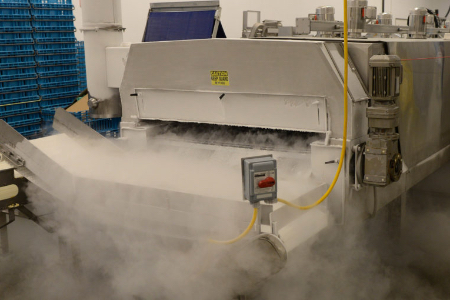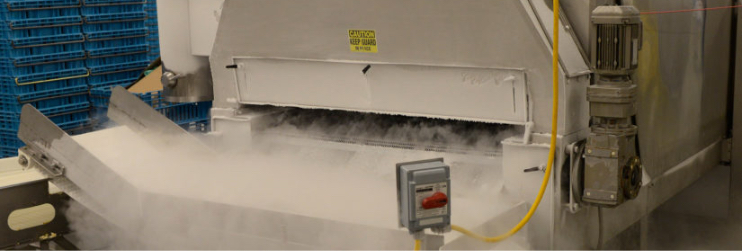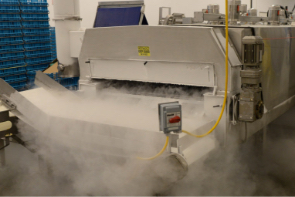Originally published on AirgasThinks.com | December 5, 2018



From TV dinners to organic gourmet meals, the frozen food industry has seen tremendous change over the past several decades. Despite a growing trend towards fresh foods, frozen foods have managed to remain relevant and continue to flourish. According to a recent report by Grand View Research, the industry is poised to grow to roughly $360 billion by 2024.
This change and growth, however, is forcing manufacturers of frozen food products to stay on their toes, as they struggle to keep up with demand and maintain product quality—while still finding cost savings. A key factor to an efficient and successful food freezing operation is making sure you have the right freezing system in place. Yet selecting a quality system that preserves food in the most economical amount of time is one of the biggest challenges facing frozen food manufacturers.
When it comes to food freezing, there are generally two main options to choose from: mechanical and cryogenic. Mechanical systems use a refrigerant in a closed cycle. These systems move large quantities of air to freeze the product. Cryogenic systems, on the other hand, use nitrogen and CO2 to freeze the product. And, while the vast majority of facilities choose mechanical, Airgas’ food, beverage and retail experts Bill Baker and Bill Adams say there are several factors that may make you consider cryogenic.
Connect with an Airgas expert for more help, insights and solutions.
The changing marketplace provides an additional challenge for frozen food manufacturers. The millennial generation is driving the trend towards fresh, local, healthy products, favoring products without preservatives. This movement is causing many frozen food manufacturers to rethink their product offerings. Companies are finding themselves diversifying their product lines. Some manufacturers are adding fresh products to their portfolios, while others are adding healthier products with fewer ingredients (less preservatives). Manufacturers are shifting from their traditional model to find a balance of items that are healthy, easy to prepare and tasty.
Regardless of the freezing system or product offering, Baker and Adams identify the most successful frozen food manufacturers as ones who conduct regular audits on their operations. These detailed evaluations help them ensure they have the best system in place for their products.
Review your cost to freeze regularly and compare to your baseline, including yield loss. If you notice changes, it may be time to reevaluate your process. In addition, regular audits can provide insight on factors that could impact peak capacity and help manufacturers stay ahead of it, while also allowing them to keep an eye on trends. As this industry continues to grow and change to meet changing consumer tastes, it’s imperative for frozen food manufacturers to adapt to stay competitive in this growing and shifting marketplace.